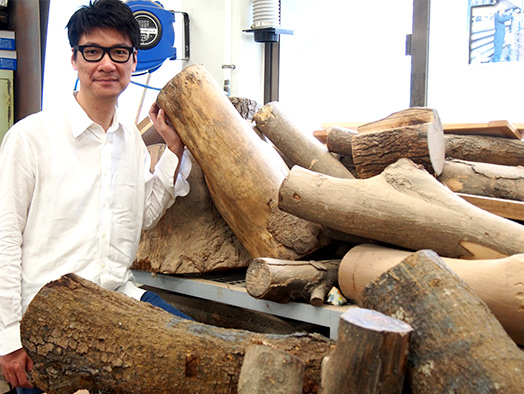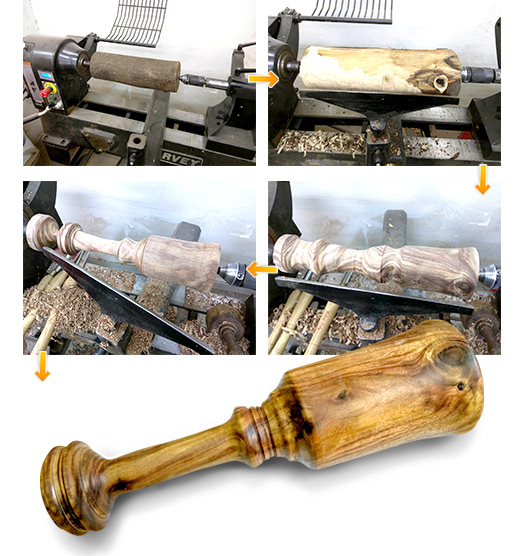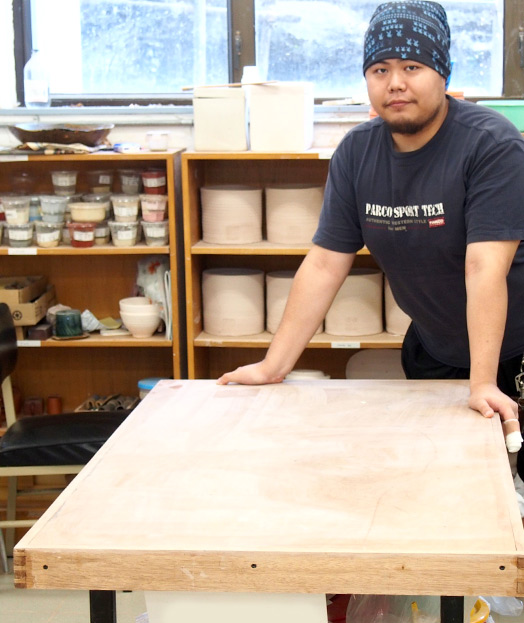
Wood for Thought: Crafting Tools from Sustainable Timber
Most of us know we should save trees by using paper more sustainably—print double-sided, use paper printed on one side for scrap paper, buy recycled paper and so on. However, when it comes to other timber products, say, furniture, the idea that there are green options for these too may be new to some. In the average office, wooden objects tend to last and the need to check out new options doesn’t present itself frequently. For the Department of Fine Arts, though, it’s a different story as they work with various wooden tools subject to much wear and tear. Fortunately, sustainability is not so much a challenge as a creative exercise where the Department’s resourceful members are involved.
Stumped No More
Sculpture students are required to start their semester by carving their own mallets, which will be used in conjunction with the chisel for sculpting. Ideally, the mallet must be crafted from a single block of wood, but it becomes increasingly expensive and rare in a market flooded with ‘composite’ wood created by binding layers of wood with adhesives. The problem was solved years ago when the Department discovered a sustainable source of lumber literally at its doorstep—the University campus.
Tam Wai-ping, assistant professor of the Department of Fine Arts, said, ‘From time to time, we collect the lumber from dead or diseased trees salvaged by the Estates Management Office. The wood should preferably be treated with a sealer and stored in a humidity-controlled environment for three years or more to dehydrate. We are only constrained by a lack of space to store the logs—currently we already have around 30 of them in storage.’
The Department is also eager to tap into other free resources and give new life to discarded timber destined for the landfill. In 2015, the Department began accepting salvaged logs—mostly acacia and camphor—from ‘Recycle Green’, a volunteer-run project which collects discarded wood from construction or landscaping works from all over Hong Kong and redistributes them to non-profit organizations.


Forest-friendly Timber
Besides mallets, the Department of Fine Arts also needs to replace its studio’s ceramic work tables regularly. The tables, benches and certain equipment are crafted in-house from plywood. In 2015, the Department purchased its first plywood stock certified by the Forest Stewardship Council (FSC)—a global, not-for-profit organization that certifies timber products sourced from forest managed in environmentally appropriate and socially beneficial ways.
Mr. Jacky Lam, the Department’s technician, sourced the plank and crafted a table from it. ‘I’ve heard much about FSC and the importance of supporting sustainably managed forests via reports by WWF and Greenpeace. When I started looking for suppliers, it did not take long for me to find one that offers FSC-certified wood. Although the price is slightly higher, the Department believes it is worthwhile and will continue to buy certified wood as long as the users are happy with the furniture crafted.’
Professor Tam said it is much easier to purchase wood from sustainable forestry now, compared to 10 years ago. ‘There is increasing global awareness about environmentally responsible purchasing. Not only are the prices of FSC-certified lumber more reasonable, ordering them online is easy too. Much progress has been made in the industry, beginning with the increase in plantations that follow FSC-standards, the international policies to promote timber product labelling, and the dealers’ introduction of labelled products to this region.
‘Although we as buyers are just the final and smallest link in the entire supply chain, our decision to buy green can still make an impact up the chain, and signal the demand for a greater variety of green products, services and supporting government policies. As a unit of a university committed to green purchasing, as well as an educator responsible for inspiring our students by setting an environmentally friendly example, this is the right direction for us to take.’


